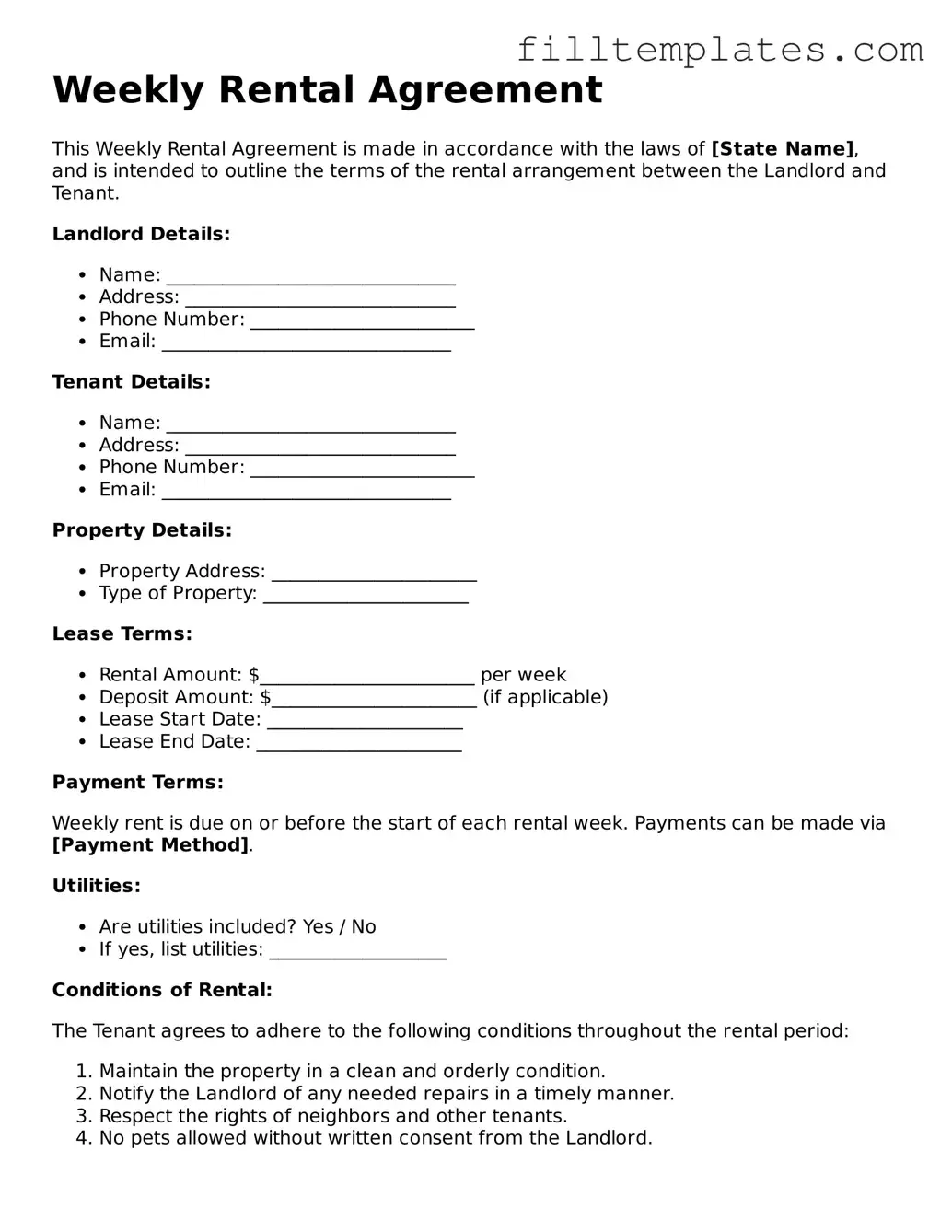Weekly Rental Agreement
This Weekly Rental Agreement is made in accordance with the laws of [State Name], and is intended to outline the terms of the rental arrangement between the Landlord and Tenant.
Landlord Details:
- Name: _______________________________
- Address: _____________________________
- Phone Number: ________________________
- Email: _______________________________
Tenant Details:
- Name: _______________________________
- Address: _____________________________
- Phone Number: ________________________
- Email: _______________________________
Property Details:
- Property Address: ______________________
- Type of Property: ______________________
Lease Terms:
- Rental Amount: $_______________________ per week
- Deposit Amount: $______________________ (if applicable)
- Lease Start Date: _____________________
- Lease End Date: ______________________
Payment Terms:
Weekly rent is due on or before the start of each rental week. Payments can be made via [Payment Method].
Utilities:
- Are utilities included? Yes / No
- If yes, list utilities: ___________________
Conditions of Rental:
The Tenant agrees to adhere to the following conditions throughout the rental period:
- Maintain the property in a clean and orderly condition.
- Notify the Landlord of any needed repairs in a timely manner.
- Respect the rights of neighbors and other tenants.
- No pets allowed without written consent from the Landlord.
Termination of Agreement:
This agreement may be terminated by either party by providing a written notice at least [number of days] days prior to the intended end date.
Signatures:
By signing below, both parties acknowledge and agree to the terms and conditions stated in this Weekly Rental Agreement.
__________________________ (Landlord Signature) Date: ________________
__________________________ (Tenant Signature) Date: ________________
